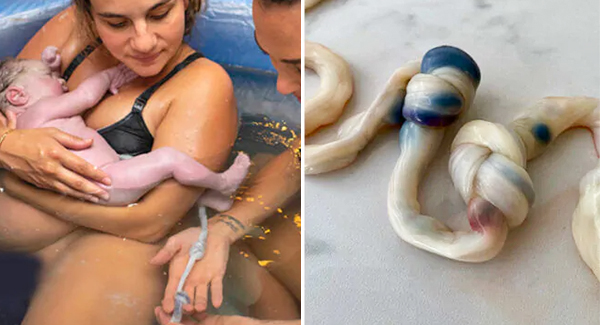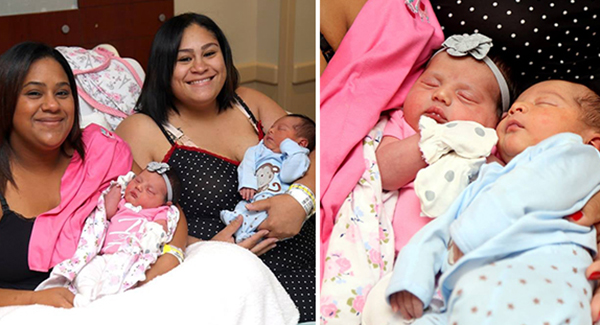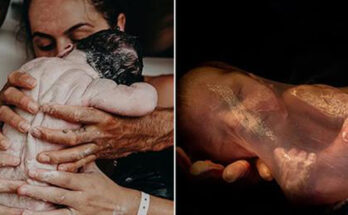Being a placenta encapsulator for three years, Ysee Batterham has examined over 200 placentas and umbilical cords, but she’d never seen anything quite like her second child’s special connection.
The discovery of baby Téo’s double true knot cord was a fitting end to an emotion-filled pregnancy.
Originally from France, Ysee met her Aussie husband Cheyne while travelling. The couple were itching to start a family. After a year of trying, they turned to IVF in 2018 to conceive their first child, Max, after a year of trying. They were able to freeze three embryos as well.
“Two years later we decided to do an embryo transfer, unfortunately, we lost one embryo during thawing and the one transferred did not take,” Ysee told Mum’s Grapevine.
“We took the decision to do a back to back transfer the following month with our last remaining little embryo. The date he was transferred was special to me as it was my beloved grandmother death anniversary.
“Once I got confirmation our transfer worked and little Téo was on his way, I realised that his due date of the 24th of February was only three days after my grandmother’s birthday. So for me from the really beginning I always said he was going to be born on the 21st … and I was right!”
Ysee woke at 2.30am on February 21, 2021, with what she suspected were regular contractions.
“My photographer Kate Kennedy arrived first followed shortly after by my two beautiful midwives Heidi and Tracy from Central Coast Homebirth. I was still chatting and laughing with them in between my contractions but they were definitely coming stronger and stronger – it was about 5am.”
“Contractions kept coming stronger and closer from each other, I used a comb to trigger my acupressure point on my hand during my all labour and my sister-in-law Ana and my husband were taking turn to massage my lower back.”
“At 7.25am I said I could feel him coming and then everything went so fast.”

“Téo had two true knots in his really lengthy cord which is quite exceptional. One true knot is already rare, but two was mind-blowing! I have been a placenta encapsulator for three years now and I have never seen two knots before, neither did my midwives or photographer!”


While true knots can be dangerous, as long as the knot stays loose it won’t cause any harm. A real knot in the cord occurs in about one out of every hundred infants. When kids do a little gymnastics in the womb, the knot generally forms. They can also form during the birthing process. If bub is small and has a long cord, they’re more likely to develop a true knot.
The umbilical cord is protected by Wharton’s jelly and it’s designed to help protect the cord’s blood vessels. It’s possible that if the knot tightens, bub isn’t getting enough oxygen. After 37 weeks, the most typical sign of this is a slowing of the baby’s movements.








